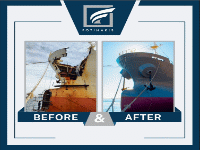For maritime personnel operating high-speed vessels, crew transfer vehicles, and small working boats, whole body vibrations (WBV) are more than just an uncomfortable part of the job, they represent a significant occupational
For maritime personnel operating high-speed vessels, crew transfer vehicles, and small working boats, whole body vibrations (WBV) are more than just an uncomfortable part of the job, they represent a significant occupational hazard with both immediate and long-term health implications. These vibrations, transmitted through the hull, deck, seat, or floor to the crew, can lead to chronic health issues, reduced performance, and compromised safety at sea.
As maritime operations continue to evolve with faster vessels and more demanding schedules, the need for effective WBV management has never been more critical. Hefring Marine addresses this challenge with its Intelligent Marine Assistance System (IMAS), which can be used to help detect, monitor, and mitigate the harmful effects of whole body vibrations in maritime environments.
WBV in maritime settings stem from multiple sources working in combination. According to Dr. Magnús Þór Jónsson, CTO and Co-Founder of Hefring Marine, the primary causes include:
- Hull-impact and slamming
- Propeller-induced vibrations
- Engine and machinery operation
- Wave motion and sea state
- Structural factors
- Exposure duration
The effects of WBV on maritime personnel are both immediate and cumulative. In the short term, exposure can cause:
- Physical discomfort and fatigue
- Muscle strain and lower back pain
- Impaired balance and coordination
- Reduced alertness and increased risk of operational errors
More
Content Original Link:
" target="_blank">



































































